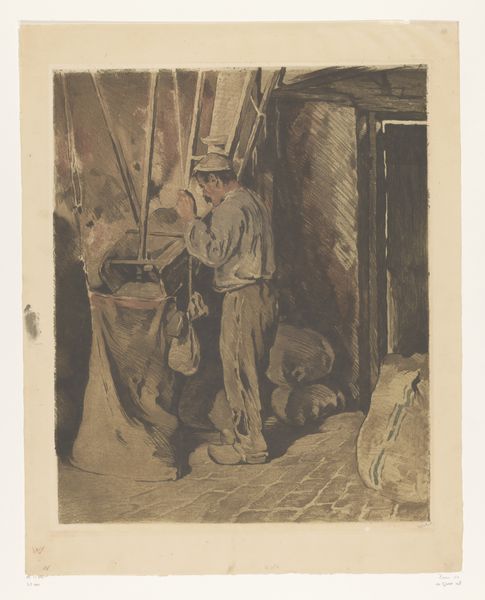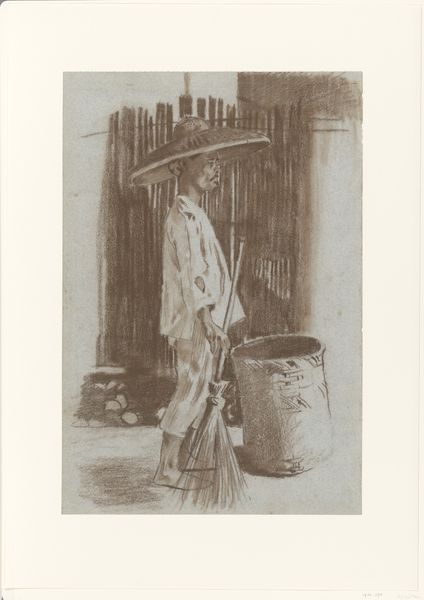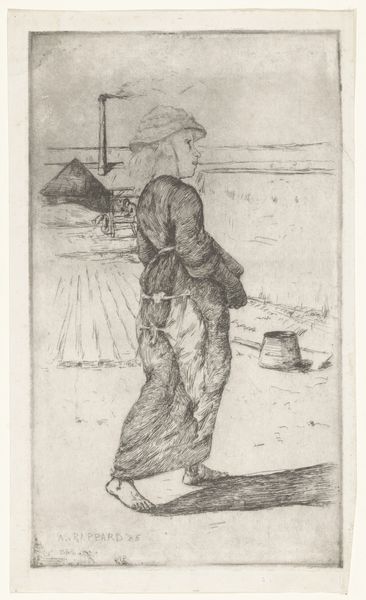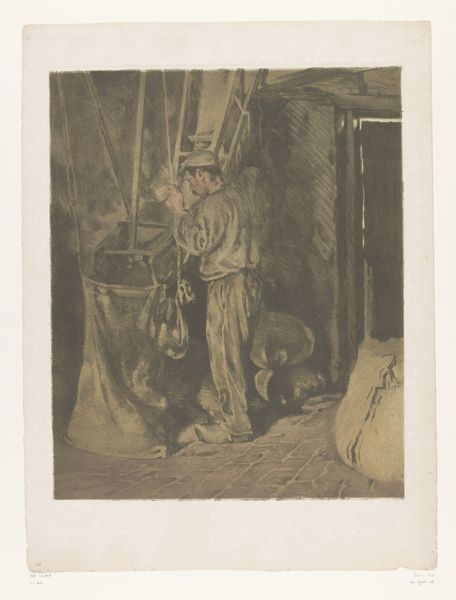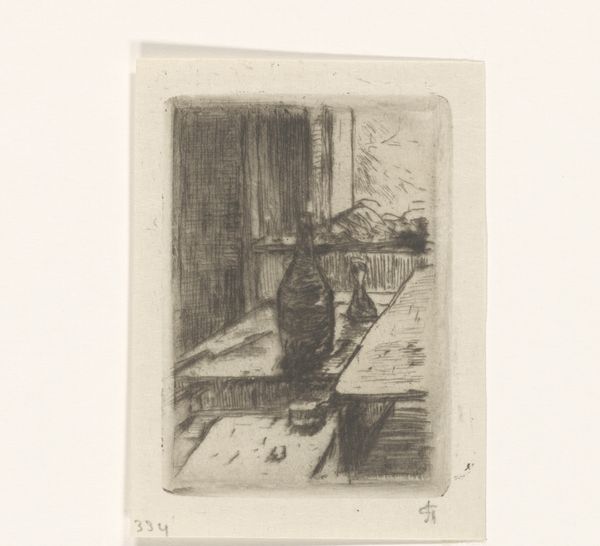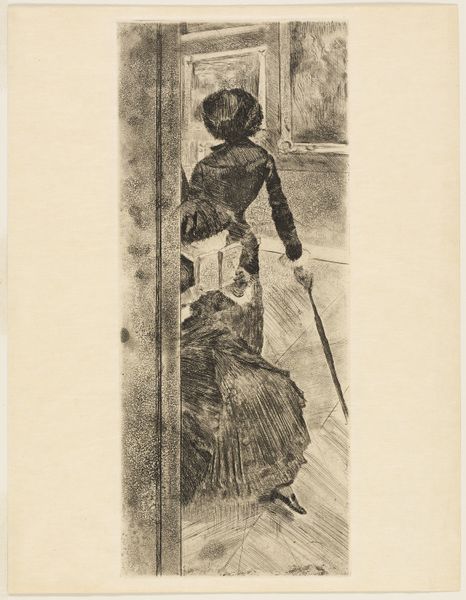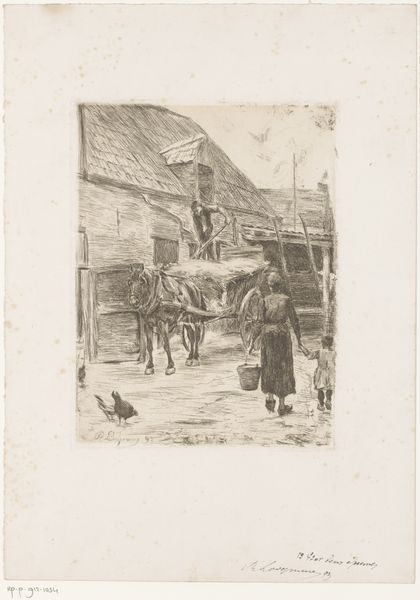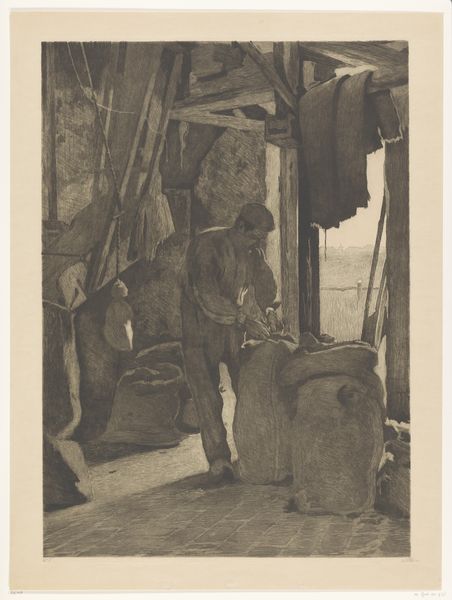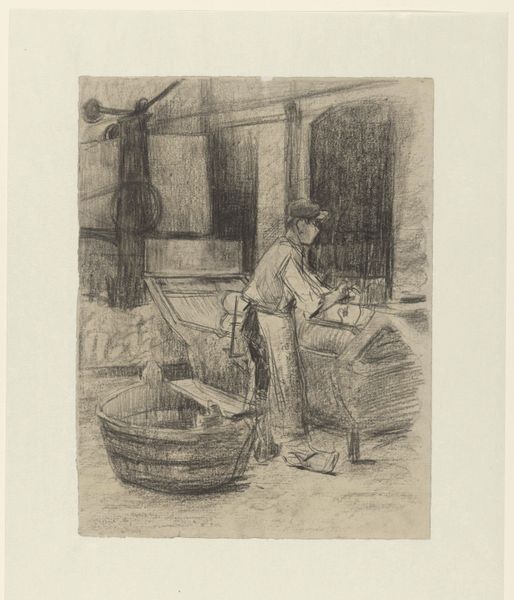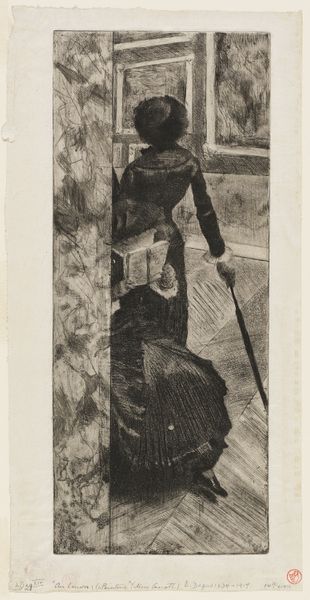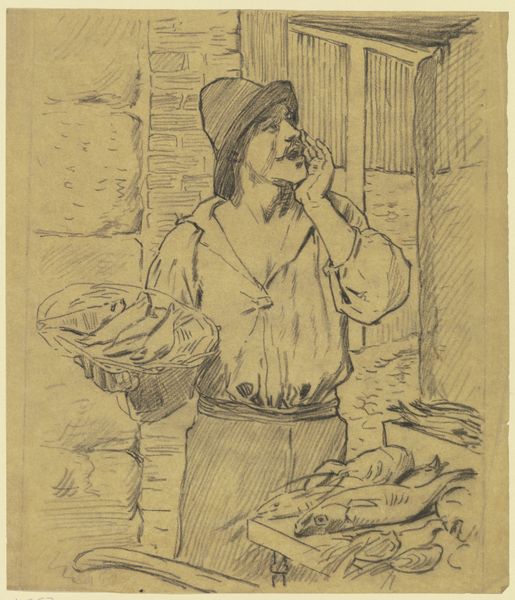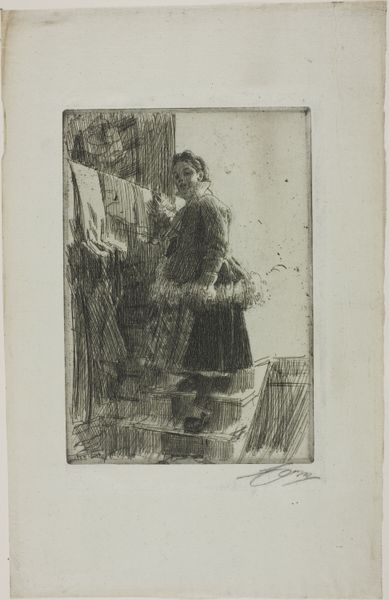
Dimensions: sheet: 12 1/2 x 8 1/8 in. (31.8 x 20.6 cm) plate: 9 1/4 x 7 11/16 in. (23.5 x 19.5 cm)
Copyright: Public Domain
Curator: Camille Pissarro’s “Woman at a Well,” created in 1891 and housed at The Met, presents a really captivating study of rural life through the medium of etching. Editor: Immediately, I'm struck by how grounded this piece feels, not in a scenic way, but almost... weighted. You can feel the labor, the burden of those buckets. The line work really digs into that feeling. Curator: Absolutely, it's less romanticized countryside and more gritty reality, isn’t it? As an impressionist, Pissarro often explored these themes of everyday life. The texture comes from the etching process – acid biting into the metal plate to create these wonderfully expressive lines. It’s a labor intensive, physically demanding method. Editor: Exactly. And when you think about the subject, a woman hauling water, connecting the artistic labor with the actual physical labor is important. Who printed this? Where was it printed? What were the social conditions for women printmakers versus painters at this time? The work inherently prompts these questions, right? Curator: That’s where it really sparks to life. Think about the subtle nuances of the pose, a weariness hinted at through the tilt of her head. Pissarro's touch captures the essence of the sitter without idealizing her; this print offers us intimacy instead, don’t you agree? Editor: For sure. And what is also so interesting to me is the backdrop... like this other character trailing. We only get a glimpse of this secondary worker, it suggests that their experience also hinges on resource access—it prompts us to investigate systems that underpin all levels of work, value, and production—artistic and manual. Curator: So true. Considering this, and looking at Pissarro’s whole body of work... there’s a kind of unassuming nobility in the lives he chose to portray. Editor: Yeah... an art shaped as much by the ink and acid and printing press as it is by the subject depicted. Pissarro seems less interested in capturing a moment in time and more interested in commenting on how we use materials and bodies.
Comments
No comments
Be the first to comment and join the conversation on the ultimate creative platform.
